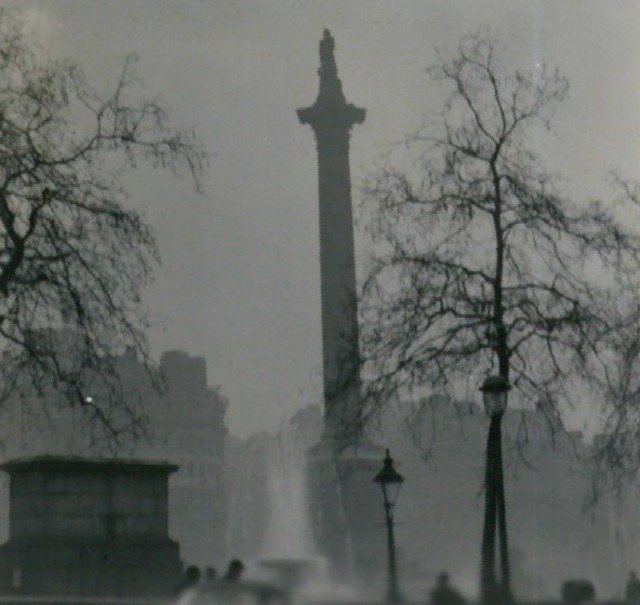air pollution,the biggest challenge for india’s health in 2020

Developed countries started recognizing Air Pollution as a threat to flora and fauna soon after the famous “London Smog: 1952”, which killed thousands of people in a few days between 5th to 9th of December. The emissions from factories and domestic fires could not be dispersed and due to high-pressure weather or temperature inversion where cold air gets trapped near the ground.

By N T Stobbs, CC BY-SA 2.0, https://commons.wikimedia.org/w/index.php?curid=4094275
The Clean Air Act
Four years later, the government passed the Clean Air Act in 1956, with one of its primary mandates was to shift to smokeless fuel in domestic as well as industrial use. Another typical example is the city of Pittsburgh in the US, which became the coal, iron and steel capital of the world during the 1940s. At the same time, the city was covered with dense smoke and became regarded as a poor city for investment. Since then, urban planning started accounting Air Pollution as a serious issue to be addressed for sustained development and to maintain quality of life and the city dramatically turned around. Air pollution in India is also prevailing for decades due to industrialization since the 1990’s.
By the eighteenth century, smoke was cited along with heat, dust, and humidity as one of the health hazards in Calcutta (now Kolkata). Thick winter mists obscured the grand architecture of Calcutta, and inhabitants were forced to breathe grey smoke.
The government of Calcutta attended to the problem and became one of the first cities in the world to adopt and enforce air pollution control measures, called the Bengal Smoke Nuisance Act, in 1905. This was well before many European and North American cities. Eventually, industrialized cities like Bombay (present Mumbai) and Gujarat established legislation on controlling smoke. Apart from industries, steam engines were the major consumer of coal during the 19th century for goods as well as passenger transport.
India’s Tryst With Air Pollution
During the 1950s, various research institutions like the Indian Meteorological Department (IMD), Bhabha Atomic Research Centre (BARC), National Institute of Occupational Health (NIOH), All India Institute of Hygiene and Public Health (AIIHPH) were involved in air pollution research. The Indian Meteorological Department, in 1954, published probably India’s first journal article on the phenomenon of dusty weather in Delhi due to winds carrying dust from Rajasthan. It was one of the pioneering papers which discussed cloud seeding as a solution to pollution as well as drought, and many of us know even today know that this is discussed as a pollution control measure.
Picture: Steam Engine from Kathgodam station 1947 (for more information on the history of the steam engine)
The United Nations held a conference in June 1972 in Stockholm, Sweden to take appropriate steps for the preservation of the natural resources of the earth, which, among other things, include the protection of the quality of air and control of air pollution. Then honourable Prime Minister Indira Gandhi attended the conference, India ramped up their actions towards various environmental issues.
The Central Pollution Control Board was set up in 1974, dedicated to looking into multiple aspects of the environment and given extraordinary powers of enforcement. During the same period, Indian Railways took action to replace coal-powered steam engines with diesel locomotives.
After the enactment of the Air (Prevention and Control of Pollution) Act in 1981, India came up with National Ambient Air Quality Standards in 1994. The standards were revised in 1998 and 2009 by adding particulate matter 2.5. At present, according to the National Clean Air Plan (NCAP), India has 122 non-attainment cities, and the cities are submitting their action plans to CPCB for a 20-30% reduction of pollution levels.
The Delhi Pollution Story
When we analyze the timelines, it is staggering that environmental policies and norms should have been at par with advances in technological and industrial development. Though we had policies for a long time, we have not reduced the air pollution in a significant manner as policies have not kept pace with economic development.

Credit: Sumita Roy Dutta [CC BY-SA (https://creativecommons.org/licenses/by-sa/4.0)]
Over time, air pollution sources have increased, and we have not addressed all the causes adequately. For example, small and medium scale industries do not require environmental clearance to operate. In Delhi, there are small industrial pockets in Naraina, Mayapuri & Seelampur known to be polluting significantly. In the Indo-Gangetic plain, stubble burning is a significant cause of seasonal pollution particularly affecting the national capital region. Industries and mining need to control emissions and shift to clean technologies.
The Three Key Steps For Sustainable Actions on the Ground
- Reduce emissions from sources. If we reduce alarming emissions, eventually, we would have a much more sustainable impact on reducing air pollution compared to just targeting the AQI.
- Believe that everyone is a partner in reducing air-pollution; industry included. Require the industry to reduce its emissions.
- Let us understand that air-pollution has its ramifications for the country’s health, both in terms of productivity and profitability. Our image and perception have implications for investment. We also need to factor the impact of climate change on our bottom-line. Do we know how our exports, tourism, and natural resources will act under this duress in the coming three decades? If we start thinking and acting today, we might be able to protect some; otherwise, we are building skyscrapers on sea-sand waiting to be washed away.
Let’s envision and work towards clean air to breathe.

